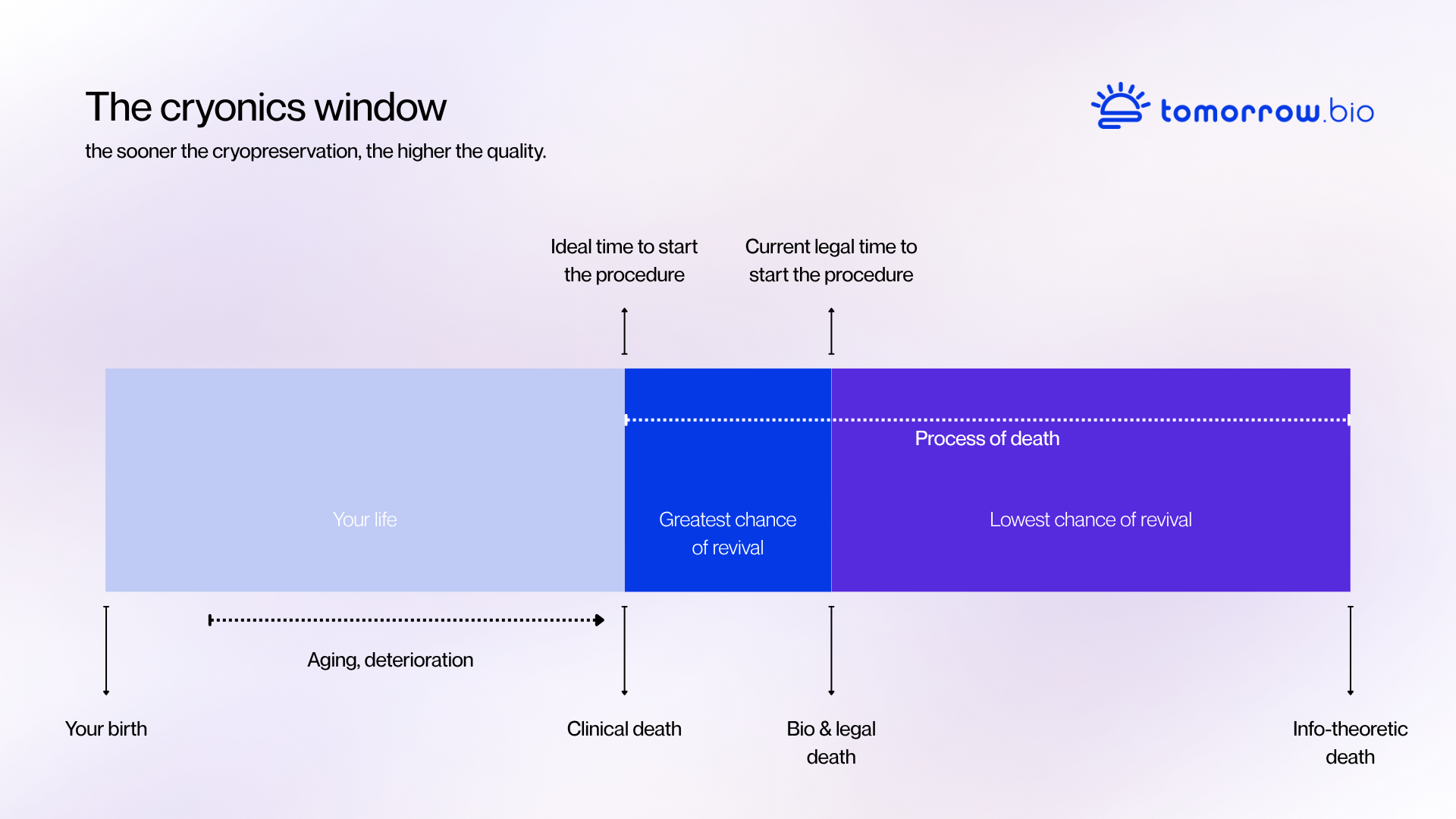Biostasis
The state in which biological activity is completely paused without loss of structural integrity. In cryopreservation, it refers to maintaining the body and brain in a stable, non-degrading condition after legal death.
Cryonics
The medical practice of preserving humans at cryogenic temperatures immediately after legal death, with the goal of preventing decay until future medicine can repair and revive them.
Cryogenics
The field of physics and engineering concerned with producing and controlling very low temperatures, typically below minus 150 degrees celsius, and studying how materials behave in such environments.
Cryobiology
The study of how living systems respond to extremely low temperatures, focusing on how to protect cells and tissues from damage caused by freezing or cooling.
Cryopreservation
The process of preserving biological material at cryogenic temperatures to halt all biological and chemical activity.
Cryoprotectant (CPA)
A chemical compound that prevents ice crystal formation inside cells during cooling. Cryoprotectants are essential for successful vitrification in cryopreservation.
Vitrification
The transformation of biological material into a glass-like solid without the formation of ice crystals. This prevents structural damage and is the method used for modern cryonics.
Perfusion
The medical process of circulating fluids, such as cryoprotectants, through the vascular system to replace blood and preserve tissues during cryopreservation.
SST standby, stabilization, and transport (Tomorrow.bio)
The operational phase that begins when death is expected or imminent. It includes positioning a team near the patient, beginning medical stabilization immediately after legal death, and transporting the patient for cryoprotection and storage.
Legal death
The point at which a physician declares that vital functions have ceased according to current medical standards. It marks the moment when cryonics procedures can legally begin.
Clinical death
The temporary cessation of heartbeat and breathing. It is potentially reversible if medical intervention, such as CPR, is performed quickly.
Biological death
The stage in which cellular structures begin to degrade and tissue breakdown becomes irreversible due to lack of oxygen and energy.
Info-theoretical death
A state in which the physical structures that encode memory and identity in the brain have been destroyed beyond any possible future recovery, making revival impossible in principle.Ccryonics window
The period between legal death and information-theoretical death during which cryopreservation can still preserve the body and brain with high structural integrity.
Glass transition temperature
The temperature (around minus 130 degrees celsius) below which molecular motion in vitrified biological material effectively stops, keeping tissues stable and free from ice formation.
Liquid nitrogen
Liquefied form of nitrogen gas, which makes up about 78% of the atmosphere. It is a colorless, odorless, and non-flammable cryogenic liquid that boils at a very low temperature of -196 degrees cellsius
Dewar
A vacuum-insulated stainless-steel container used for storing cryopreserved patients or samples in liquid nitrogen. It minimizes heat transfer and does not require electricity.
Perfusion circuit
The closed-loop system that circulates cryoprotective solutions through the body at controlled pressure and temperature during cryopreservation.
Rewarming
The controlled process of gradually increasing temperature to bring vitrified tissues back to biological temperatures without causing cracking or ice formation.
Ischemia
A condition in which tissues are deprived of oxygen due to lack of blood flow, leading to cellular damage. Minimizing ischemia after death is critical for high-quality preservation.
Neurocryopreservation
Cryopreservation of the brain or head only, focusing on protecting the structures responsible for identity and memory.
Whole-body preservation
Cryopreservation of the entire human body, including all organs and tissues.
Cryoprotectant toxicity
Cellular stress or damage that can occur if cryoprotectant concentrations or exposure times are not properly controlled during perfusion.
Molecular integrity
The preservation of a material’s molecular structure, ensuring that no biochemical reactions or physical breakdown occur over time.
Refractive index
A measurement used during perfusion to track cryoprotectant concentration and confirm proper solution replacement within the body.
Stabilization procedure
The first stage of cryopreservation, involving rapid cooling, medication, and mechanical support to slow metabolism and maintain tissue viability before cryoprotectant perfusion.
Long-term storage
The long-term maintenance of preserved patients or samples in liquid nitrogen at temperatures around minus 196 degrees celsius.
Revival (future reanimation)
A theoretical future medical process that would restore biological function and consciousness to cryopreserved patients once the underlying cause of death can be repaired.






